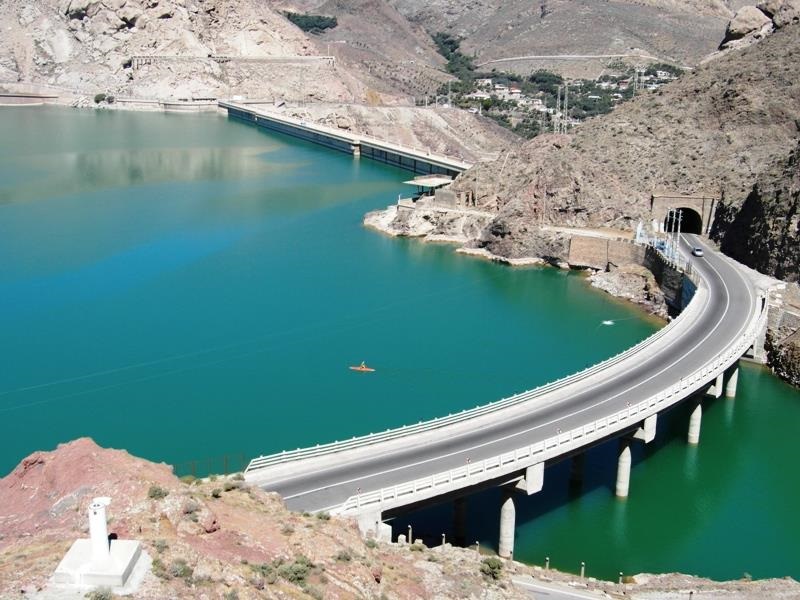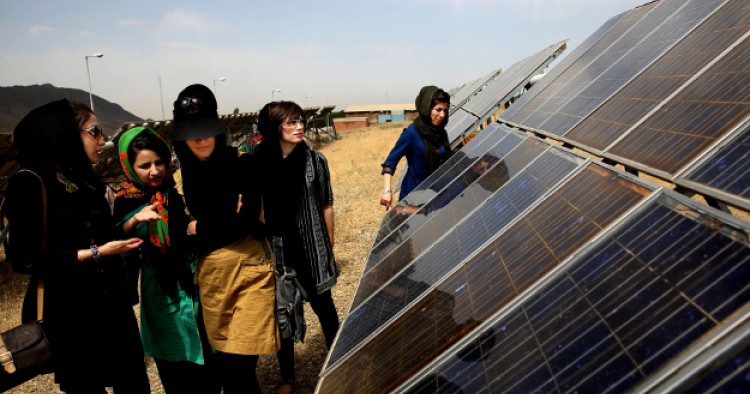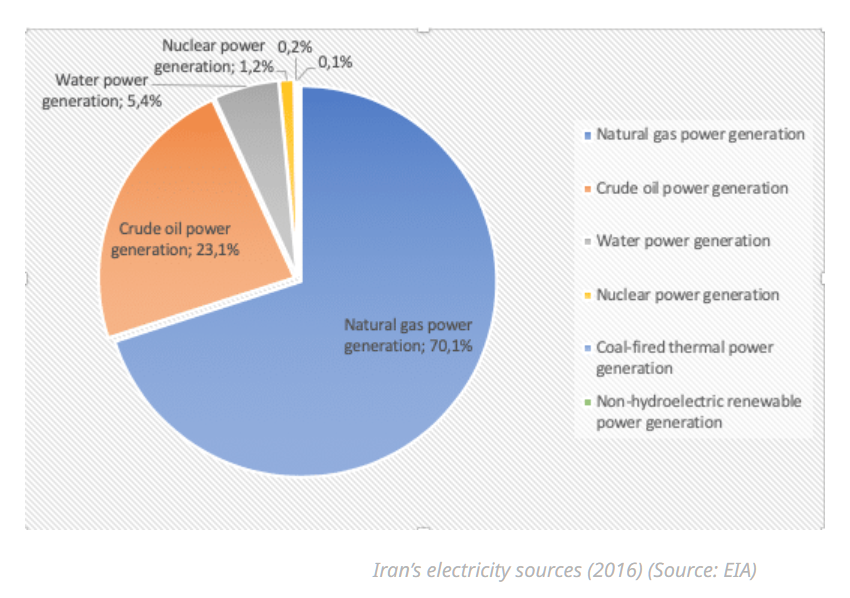
Iran, located on the new Eurasian land-bridge of the Silk Road Economic Belt as well as the China-Central Asia-West Asia Economic Corridor, is an important point along the “Belt and Road”. In January 2016, China and Iran established a comprehensive strategic partnership and signed “the Memorandum of Understanding on Jointly Promoting Construction of the Silk Road Economic Belt and the 21st Century Maritime Silk Road”. The formal BRI MoU was signed in November 2018. On 1 January 2024 Iran officially became a member of the BRICS group.
Based on the concept that “the future world belongs to Asia”, Iran put forward the policy of “Look to the East” to develop relations with China from a strategic perspective. In a Joint Statement on Comprehensive Strategic Partnership between the Islamic Republic of Iran and People’s Republic of China, the two countries stated they would enhance their bilateral and multilateral cooperation in areas such as fossil fuels as well as new and renewable energies, and carry out the relevant experience and technical exchanges, personnel training, etc.. Renewable energies have become important content in cooperation between China and Iran under the Belt and Road Initiative.
Iran is rich in hydropower and wind energy resources. Its total installed capacity of renewable energy is among the highest in Western Asia (up to 2018), if one includes hydropower that accounts for a high proportion. Iran is also rich in oil and gas, much of which is used to generate electricity at domestic power plants with substantial subsidies from the Iranian government and at the same time reduces the country’s export earnings from oil and gas exports (also hindered by sanctions). To reduce the country’s over-reliance on oil and gas for electricity production, the government plans to increase renewable energy capacity, as part of ramping up total electricity capacity from 74 GW to more than 120 GW by 2025.
China’s renewable energy cooperation with Iran currently focuses on hydropower, photovoltaic power generation, wind power generation and biomass power generation. The mode of cooperation is mainly EPC (engineering, procurement, construction) project general contracting. The cooperative enterprises include large state-owned enterprises such as Gezhouba Group, Power China and Sinosteel Group, as well as private enterprises such as CIRI and Zhejiang ECO-WASTE Technology.
Renewable energy potentials in Iran
According to the International Renewable Energy Agency (IRENA), Iran’s total installed renewable energy capacity grew at an average annual rate of 3.7% between 2014 and 2018, well below the world average of 8.5% over the same period. However, since 2016 Iran’s installed solar capacity has increased rapidly, from 9 MW in 2014 to 286 MW in 2018, an average annual increase of 173 percent. In addition, installed wind power capacity increased from 149 MW in 2014 to 282 MW in 2018, with an average annual growth rate of about 18.8 percent. By the end of 2018, the total installed capacity of renewable energy in Iran was 12.7 GW. Due to different statistical standards, the total installed capacity of hydropower in Iran reached 13.1 GW in 2018, making it the most important renewable energy source in Iran. The total installed capacity of renewable energy such as photovoltaic power generation, wind power generation and bioenergy generation was only 580 mw (as shown in table 1), and the abundant renewable energy in Iran has not been effectively developed.

Unlike other middle eastern countries, Iran has a relatively rich network of rivers. As early as the 1950s, Iran began to develop its abundant hydropower resources, which provided the basis for the country’s rapid hydropower development in the late 20th century. However, in recent years, widespread drought has reduced Iran’s hydropower capacity. Accordingly, Iran’s hydropower projects have made slow progress in recent years, with no new hydropower installed during 2015 and 2016.
Iran’s wind power resources are mainly concentrated in the northwest and northeast regions of the geographical corridor, with a wind power potential of up to 100 GW, which is comparable to the European major wind developing countries such as France and Britain. Iran is rich in solar energy, with the south, northwest and southeast regions receive around 300 days of sun per year. Iran’s Fifth Five-Year plan includes a stipulation that its installed renewable energy capacity should grow by 5,000 MW by 2018, including 4.5 GW of wind power and 0.5 GW of photovoltaic power. However, by 2018, Iran’s total installed capacity of wind and solar power was only 568 MW, far below the target. Compared with solar power, wind power is a relatively mature renewable energy in Iran. Domestic enterprises in Iran have certain production capacity of wind power equipment and have low dependence on imported equipment.

Iran’s renewable energy development program and incentive policies
According to BP, by the end of 2017, Iran’s proven oil reserves were about 21.6 billion tons, accounting for 9.3% of the world’s proven oil reserves, ranking the fourth in the world. Discovered natural gas reserves were about 33.2 trillion cubic meters, accounting for 17.2% of the world’s proven natural gas reserves, ranking second in the world. Iran’s abundant oil and gas not only serve to meet its own needs, but only accounts for an important source of foreign currency for the Iranian government.
In 2016, Iran generated 276 billion kilowatts of electricity, of which fossil energy provided 93% of the fuel needed for power generation, making it the country’s primary source of power generation fuel. However, hydropower, wind power, nuclear power and other clean energy sources account for less than 8% of electricity, while non-hydropower renewable energy sources account for less than 1% (as shown in figure 4.10). In the field of electricity production in Iran, a large amount of oil and gas is used as primary energy for domestic power plants to generate electricity, which not only requires substantial subsidies from the Iranian government, but also reduces the foreign exchange income of the country’s crude oil export trade.

Iran’s government plans to accelerate the development of renewable energy, such as wind power and photovoltaic power, aimed at reducing the country’s over-reliance on oil and gas for electricity production. With the Fifth “Five-Year Plan” put forward, the Iranian government recently (2018) gave priority to the construction of a number of total installed capacity of 5 GW of renewable energy power plants. In the long-term (before the end of 2025), the Iranian government decided to increase total installed power-generating capacity from 74 GW to more than 120 GW.
In addition to the renewable energy development goals, the Iranian government established the Iranian renewable energy organization (SUNA) under the ministry of energy in 1996, which is responsible for assessing renewable energy potential in Iran and promoting related renewable energy projects. In recent years, to attract private capital to participate in the development of renewable energy, Iran’s government signed the power purchase agreement (PPA) for a period of 20 years with project developer through “renewable energy and energy efficiency (SATBA), and in accordance with regulations of the government’s renewable energy electricity subsidies to buy renewable power online. One of the highest subsidies is on the installed capacity of 10 MV photovoltaic power generation and geothermal power generation, under the subsidy price of 4900 Riyal/KWH (as shown in table 2).

Major areas and representative projects of renewable energy cooperation between China and Iran
China’s renewable energy cooperation with Iran is broad, covering hydropower, photovoltaic, wind power and biomass power generation. Chinese cooperative enterprises mainly include Gezhouba Group, China Power Construction Corporation, China Steel Group, and CIRI, a private enterprise. Chinese standards and technologies are extensively used in the bilateral project cooperation, which will serve as a good example for China’s renewable energy standards and technologies to enter the Middle East market.
China-Iran hydropower cooperation
At present, the largest cooperative project between China and Iran in the field of renewable energy is the EPC project of Rudbar Lorestan hydropower station in Iran, as undertaken by China Gezhouba Group. As the first project under the China-Iran financing cooperation framework, and as the hydropower station with the largest installed capacity in Iran, 80% of the whole project adopts Chinese standards, laying a good foundation for Chinese enterprises to participate in the construction of hydropower projects in Iran.[6]
The Rudeba hydropower project is located in the Rudeba river basin in Iran’s Lorestan province, about 454 kilometers from the capital Tehran. The project is designed to have a installed capacity of 450 MW, install two 225 MW units, generate a total of 986 GW per year after production, reduce greenhouse gas emissions by about 626,100 tons per year, and provide nearly 2,000 jobs for local residents during construction (see figure below). The EPC project was built in 2011 with a total investment of 4 billion RMB. The main equipment, generator sets and steel structures are all made in China. In May 2017, two 225 MW generating units were put into operation.
At present, the major projects of China-Iran photovoltaic cooperation include PowerChina’s 600 MW photovoltaic project and Sinosteel’s 1 GW solar park.
In November 2017, China Power Construction Group Guizhou Engineering Corporation signed a cooperation agreement with Quercus Investment Partners Limited, the third largest new energy Investment fund in Europe, on Iran’s 600 MW photovoltaic project, which is the largest photovoltaic project in Iran. The project will be developed in six phases of 100 MW each, with a total investment of 600 million euros. It is planned to be completed and connected to the grid within three years. In addition, in November 2017, China Power Construction Group Guizhou Engineering Co., ltd. signed a 1.114 MW photovoltaic power station project contract with CIRI. This project is located in Larestan, Iran, with a planned capacity of 1.114 MW.
In July 2018, Sinosteel signed an agreement with Italy’s Denikon to build a solar park with a capacity of up to 1 GW in Yazd, central Iran. In addition to building a 500 MW to 1 GW solar park, the agreement will involve 20,000 residential solar power plants and a photovoltaic panel manufacturing plant, which will help reduce Yazd’s reliance on fossil fuels for power generation.

Wind power cooperation between China and Iran
In November 2017, China Power Construction Group Guizhou Engineering Co., Ltd. and CIRI signed the Lotak wind power station project, which is located in Lotak, Iran, with a planned capacity of 2.5MW . Guizhou Engineering Company of China Power Construction Group undertook the construction by EPC.
In March 2018, Guizhou Engineering Company of China Power Construction Group signed wind power EPC projects with 150 MW installed capacity in phase III of Nimrouz I / II / III with three SPV companies, namely, Baad Gostar Paak Asia, Energy Sabz Jaadh Abrisham, Energy Park Jaadh Abrisham Asia, Iran, with a total contract amount of RMB 1.5 billion. Nimrouz wind power project is located in Sistan Baluchistan province, Iran. The contract includes the design, procurement, construction and operation and maintenance of 150 MW wind power plant, 400 KV substation and related transmission lines. Guizhou Engineering Company of China Power Construction Group takes Iran as the center that facilitates the expansion of renewable energy projects in the Middle East. It not only gives full play to its advantages of the integration of the whole industrial chain of renewable energy projects from design, production and construction, but also pushes China’s renewable energy power standards to the Iranian market and promotes the development of local renewable energy power.

Biomass power generation cooperation between China and Iran
In addition to cooperation in hydropower, solar power and wind power, Chinese enterprises have begun to participate in Iran’s waste power projects. Zhejiang ECO-WASTE Technology is the first high-tech environmental protection company to build a waste power plant for Iran. It has been developing and participating in the waste incineration power generation market in Iran since 2011. In 2013, Zhejiang ECO-WASTE Technology signed a contract for the construction of three waste incineration power plants in Tehran, Naushaher and Sari to provide waste incineration power generation technology and equipment for the project.
Note: Data in the above report was compiled in 2020. In October 2020 Iran’s Renewable Energy and Energy Efficiency Organization (SATBA) announced that by March 2021, 28 new renewable power plants would be inaugurated across Iran.
According to energy market predictions, Iran’s renewable energy market is expected to grow at a rate of over 10% during the period of 2020-2025. The primary driver of the market includes includes increasing concerns over rising pollution from the consumption of fossil fuel. However, with United States imposed sanctions on the Iranian trade sector, the construction of renewable projects is expected to be difficult.
Iran’s renewable energy market is expected to be driven by major hydro-power projects under construction, which is expected to add nearly 1650 megawatts to the country’s total capacity, during the forecast period. Apart from hydro, Iran is also planning to expand its solar capacity, which would help Iranian renewable energy to grow further during the period.
On 2 Feb 2024, the Atomic Energy Organization of Iran (AEOI), announced the start of construction of a new nuclear power plant, in line with Iran’s initiative to upgrade nuclear energy generative capacity to 20,000 megawatts. The Iran-Hormoz nuclear power plant, with a capacity of 5,000 megawatts, will be built in Sirik city, located in the southern coastal province of Hormozgan.
Russia is currently building the second power unit of the Bushehr nuclear power plant — the largest joint Russian-Iranian project — which is located in southeastern Iran along the Persian Gulf coast.
The first nuclear power unit, completed in cooperation with Russia, was connected to Iran’s national power grid in September 2011, while a contract for the construction of the third power unit has been signed.
Source: Green Finance & Development Center, [Extract] https://greenfdc.org/renewable-energy-cooperation-and-investment-and-financing-between-china-and-iran/